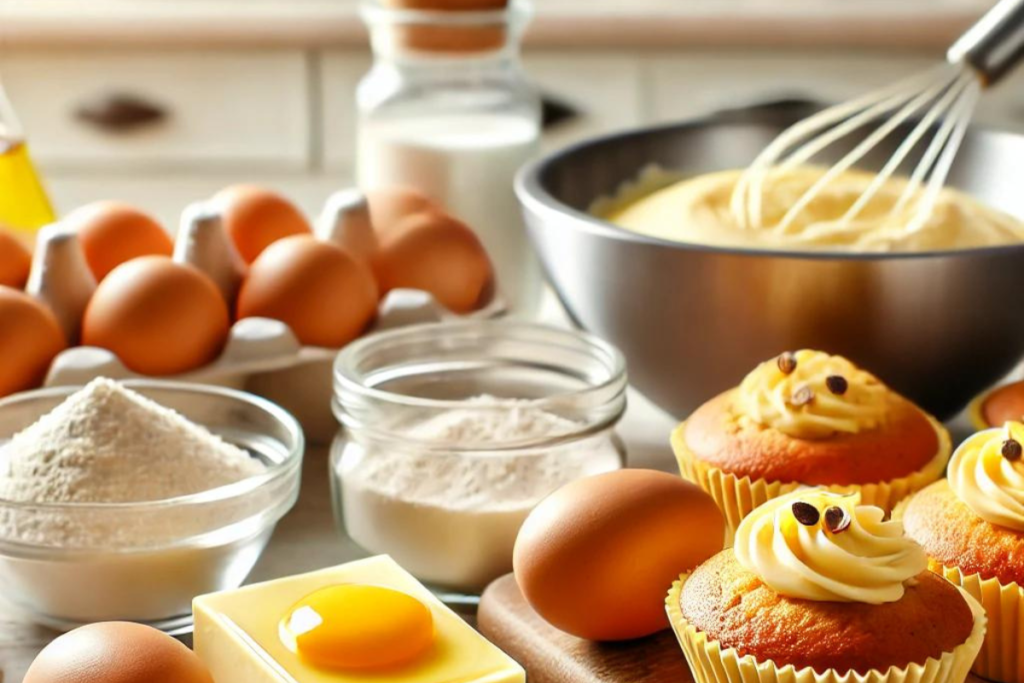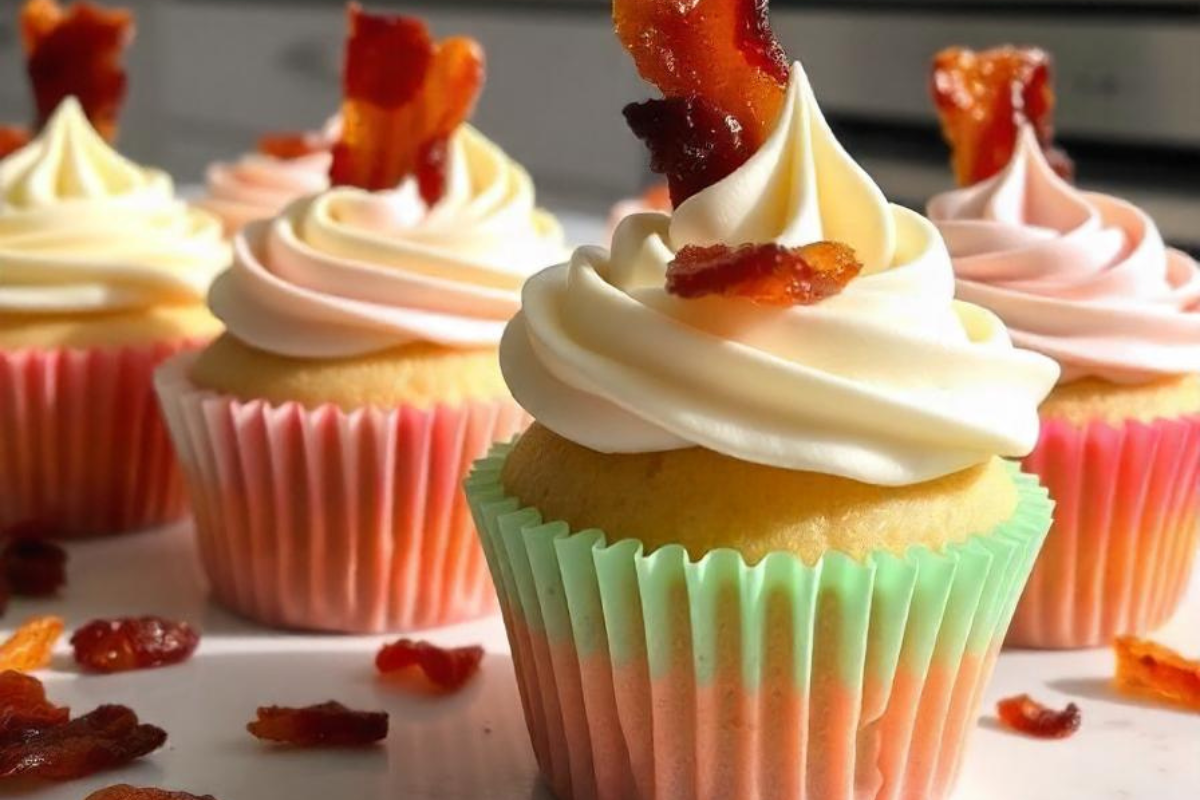Baking cupcakes can be both fun and challenging, especially when you’re striving for that perfect, bakery-style dome. Whether you’re preparing cupcakes for a special event or just for fun, it can be frustrating when they come out flat. Fortunately, there are several tips and techniques you can follow to help your cupcakes rise higher and look more professional.
In this article, we will walk you through some essential steps to ensure that your cupcakes rise perfectly every time. By the end, you’ll have a thorough understanding of how to achieve the high, domed cupcakes you’ve been aiming for.
Understanding the Science of How to Make Cupcakes Rise Higher

First and foremost, to get your cupcakes to rise, it’s important to understand the role of leavening agents. Cupcakes rise due to the release of gas from these agents, such as baking powder or baking soda. When these ingredients are heated, they create air pockets that expand, giving your cupcakes a beautiful rise.
- Baking powder creates gas when it reacts with moisture and heat.
- On the other hand, baking soda requires an acid, like vinegar or buttermilk, to activate and produce the rising effect.
For the best results, always ensure your leavening agents are fresh. If you’re unsure, a quick way to check is by adding a teaspoon of baking powder to warm water. If it bubbles, it’s still good to use. Additionally, using expired ingredients can greatly affect your cupcakes’ ability to rise.
To learn more about how the freshness of ingredients can affect your baked goods, check out this article on how to keep cakes from falling.
Best Oven Temperature for Perfectly Domed Cupcakes
Another key factor to ensure your cupcakes rise high is controlling the oven temperature. One of the best techniques is to bake them at a high initial temperature. Here’s how it works:
- Preheat your oven to 400°F.
- Bake the cupcakes at this temperature for the first 5 minutes.
- Then, reduce the temperature to 350°F for the remainder of the baking time.
This initial burst of heat will help the cupcakes rise quickly and form a dome. After those first 5 minutes, lowering the temperature allows the cupcakes to bake evenly without burning. Furthermore, controlling the temperature helps prevent overbaking, which can result in dense cupcakes.
For more insights on temperature control and baking methods, check out this detailed guide on how to prevent dry cakes.
Using the Right Ingredients for High-Rising Cupcakes
In addition to temperature, the quality of your ingredients plays a major role in how high your cupcakes rise. First, always use fresh ingredients, and make sure that key components like baking powder, eggs, and butter are at room temperature before starting. Here are a few tips:
- Fresh leavening agents: Using expired baking powder or baking soda can cause your cupcakes to fall flat. Always ensure these are fresh.
- Room-temperature ingredients: Cold ingredients can prevent your batter from mixing evenly, which affects the rise. Let your butter, eggs, and milk sit out until they reach room temperature.
- All-purpose flour vs. cake flour: All-purpose flour gives structure to cupcakes, but if you’re aiming for a lighter texture, consider using cake flour.
Mixing Techniques for Perfectly Risen Cupcakes
Next, how you mix your cupcake batter plays a crucial role in determining how much your cupcakes will rise. Follow these steps for the best results:
- Cream the butter and sugar: Creaming helps incorporate air into the batter, which is essential for a high rise. Beat the butter and sugar together until light and fluffy.
- Alternate dry and wet ingredients: This technique prevents overmixing, which can deflate the batter. Start and end with the dry ingredients for a balanced mix.
- Moreover, avoid overmixing: Once everything is combined, stop mixing. Overmixing can lead to dense, flat cupcakes.
On that note, it’s essential to avoid overworking the batter, as this can eliminate the air pockets that contribute to a perfect rise. Moreover, learning how to maintain the right balance in the mixing process is key to cupcake success.
Learn more about batter preparation in this article about the best ways to prevent soggy cakes.
Filling Your Cupcake Liners
Even the amount of batter you put in your liners can affect how high your cupcakes rise. Here are a few tips:
- Fill your liners 2/3 to 3/4 full to give the cupcakes room to rise without overflowing.
- Use a cookie scoop or ice cream scoop to ensure consistent portions, which will help your cupcakes rise evenly.
Common Cupcake Baking Mistakes to Avoid
Additionally, it’s important to know what mistakes to avoid. By steering clear of these common pitfalls, you’ll be more likely to get your cupcakes to rise higher:
- Overmixing the batter: Overmixing develops gluten, which can result in dense cupcakes that don’t rise well.
- Incorrect oven temperature: Always preheat your oven and use an oven thermometer to ensure the temperature is accurate.
- Opening the oven door too soon: Resist the temptation to open the oven door before the cupcakes are fully set. This can cause them to collapse.
By keeping these factors in mind, you’ll significantly reduce the likelihood of ending up with flat cupcakes.
FAQs
How can I get my cupcakes to rise higher?
Use fresh leavening agents, bake at an initial high temperature, and avoid overmixing the batter.
Why do my cupcakes deflate after baking?
Cupcakes may deflate if the oven door is opened too soon or if the batter is overmixed, causing the air bubbles to collapse.
Can I substitute baking soda for baking powder?
Baking soda requires an acidic ingredient to activate, while baking powder does not. Always follow the recipe to ensure the correct balance.
In summary, with the right techniques, it’s easy to get your cupcakes to rise higher and look more impressive. Remember to use fresh ingredients, follow proper mixing methods, and control the oven temperature for the best results. By applying these tips, you’ll be on your way to baking cupcakes that rise beautifully every time.
Happy baking! 🧁
